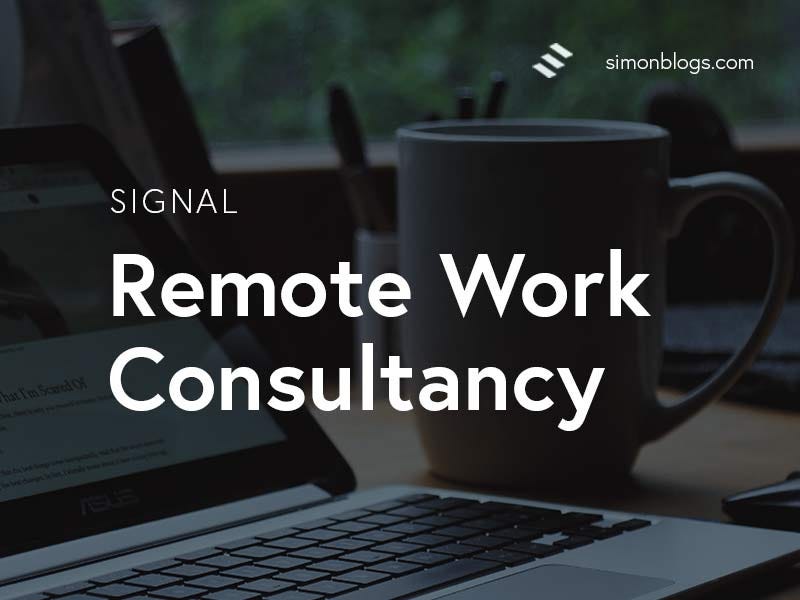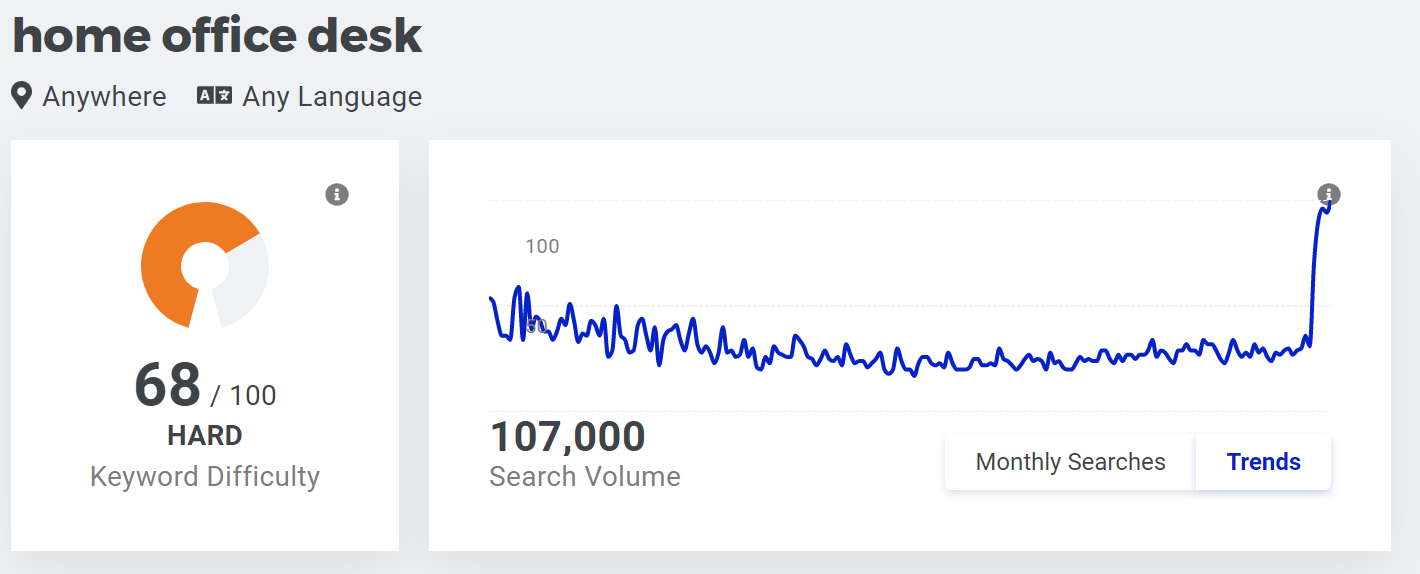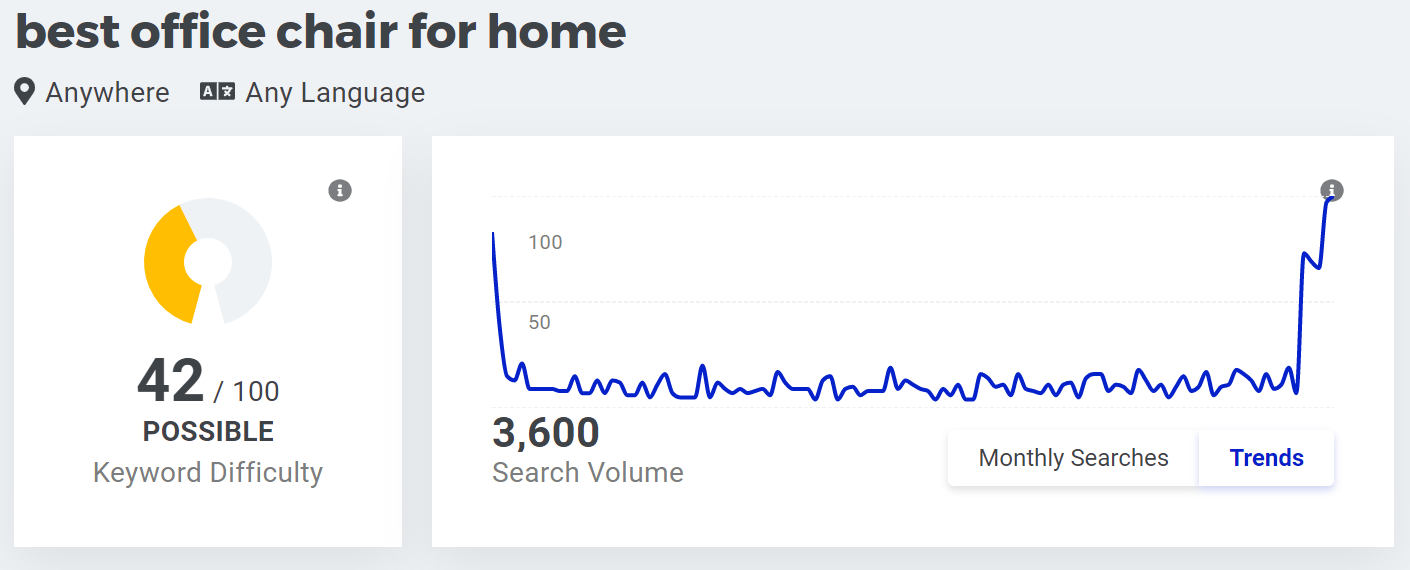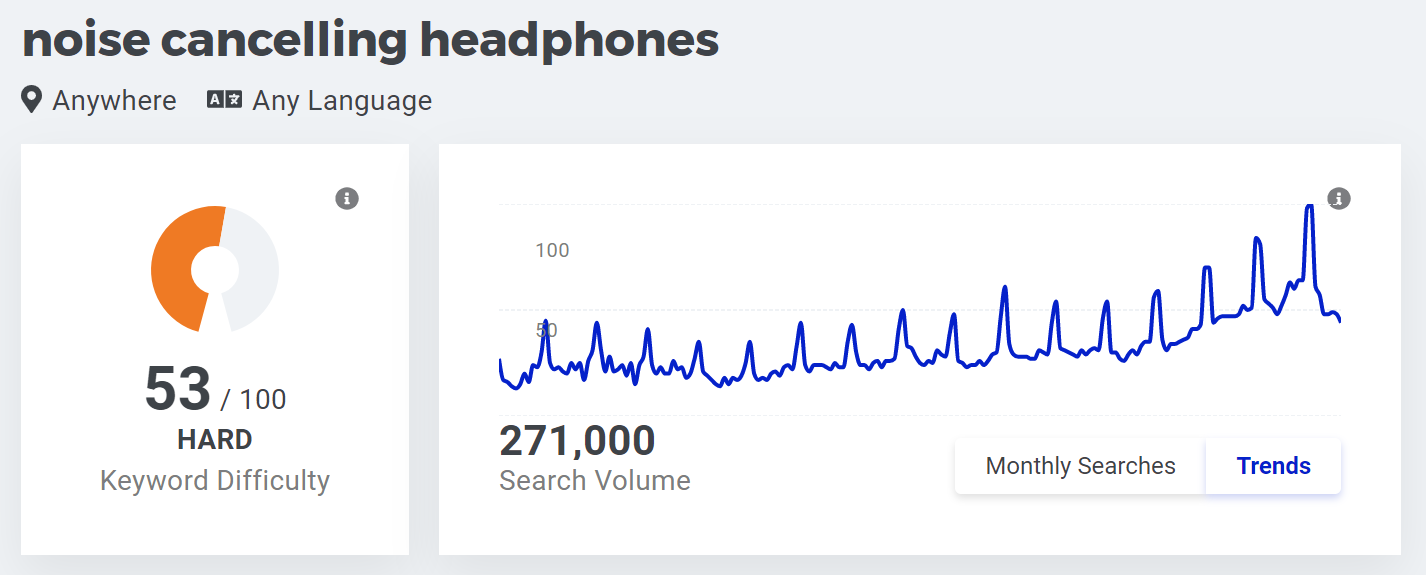⚡ Signal - A Zero Capital Business Idea
Also inside: What every viral YouTube video in 2019 has in common.

Hello Everyone!
🔙 In case you missed it, here’s last week’s edition on Clever Curation. It’s a super fun business you can start from home, today.
Let’s get crackin!
🚀 Startup Labs
// A business idea, explored
Remote Work Consultancy
Service businesses often get a bad rap. They’re not sexy, 10X revenue valuation businesses that VC’s are looking at backing.
That doesn’t mean they’re not valuable.
I am in the process of writing a comprehensive Startup Checklist. It’s everything (almost) every founder should have considered up until the point where they launch.
One of the biggest hurdles I tackled over there was startup capital. What do yo do if you want to start a business that requires capital, but have none?
Well, truth is - services businesses are a great way to do that. You’re trading your time for cold hard cash. It’s that very fact that makes them both appealing and not. If you have built up a skill that almost no one else has to your level of expertise - someone will likely pay you for that skill.
Here’s Seth Godin’s take on the subject:
We’re all so busy doing our work that sometimes we fail to build a skill worth owning.
If you invest 100 hours in a rare skill, you’re likely to acquire it. If you could learn to sharpen a tool better than your peers, organize a high-performance database, see the nuances in some sector of cryptography, know how to build a pretty-good WordPress site or really understand the arc of a particular writer’s career, you’d have something of value. Something that anyone who was focused enough to invest 100 hours could have, but few will choose to commit to.
Here’s a short example:
The second business I stumbled into was coaching. I was a running coach.
I probably wasn’t qualified to do it - but I made that explicitly clear to anyone who wanted to join. What I didn’t have in a formal degree, I made up for in hours and hours of passionate research, reading and practice on my own body. Over the course of 3 or 4 years I became an ‘expert’ in running. And then suddenly, because I was good at it, people wanted to pay me for it. And they paid me well. It was a cash-generator!
You can do the same. Here’s how.
⚡ The Opportunity
Businesses around the world are waking up to the fact that they have to be moving remote. Some are going remote-first. At the very least, having remote employee’s as an option is favourable.
It’s also in the best interests of the business:
They get access to a much larger pool of talent,
Their employee’s are happier and majority work harder,
Reduced costs for the business (smaller offices, etc.).
The thing is, most of your small mom-and-pop family businesses have absolutely no idea how to start. I’m talking about your 10-employee insurance broker businesses, and your small business accountants with less than 100 employee’s.
I’ve witnessed this first hand as my dad’s company has stumbled it’s way through remote work tools, remote work communication, policies etc.

Consider the following keyword trends:



People are turning to Google for answers to their work-from-home needs.
The opportunity lies in making this transition as easy as possible for local businesses. Use your expertise to take the stress out of their hands, and let them focus on running their business through an already-stressful period.
💥 Features
Consider your area of expertise, and then focus on that. I’d look at the three aspects that are most challenging:
People management - How do we manage our employee’s to get the best out of them while they’re working from home?
Process management - How do we move our current systems to ones that work when some of our employee’s are at home?
Technology & tools - What do we need to get people working remotely efficiently?
If you can offer all three - great. If not, focus on what you can.
📈 Gameplan
Service
This one is super quick and easy to setup. You could get started in less than 5 minutes if you didn’t need to do any reading about the three subjects I mentioned above.
Decide what service you’re going to offer. Are you doing all three? Then start reading. Gather facts, information and build a case for how your service is going to help a business.
Remember, you’re solving a problem for the business owner: You’re saving them time and money in sunk experimental costs, by delivering a packaged solution of how they can move their company remotely.
This would be my approach:
Create a resource for each of the three segments above. A list of tools, resources and advice for each one. This establishes you as an ‘expert’.
Offer a consulting service which helps a business move over each of those facets of their business, as a modular package.
Have pricing tiers based on the size of the business (Google: how does enterprise pricing work).
At the very bottom of the tier, have an eBook which you can sell to really small businesses. Charge $100, promise that by the end of the book, their business will be setup and ready to go. Write the eBook as you learn about the different tools etc. in the industry.
At the very top of the tiers, have a full hands-on consultancy where you dive into the company and deal with employee’s hands on, to make the transition as smooth as possible. Charge $5000+.Do a half-hour intro video call (Be sure to get the email invite and everything looking extremely professional. This is your first impression. Make it slick.) where you listen to the business owner and find out important information about how they work. Ask questions around the three topics above to get a full understanding. End off with:
”I feel I’ve got a good understanding of the way your business works, and what you need. I’m going to put together a plan to get you working remotely as efficiently as possible. You will hear from me in the next 48 hours and we can go from there. I’m excited about working with you on making [Business Name] as efficient as possible. Thanks for your time!”Deliver a proposal, with a timeline and give a clear indication of kick-off and completion dates with key deliverables along the way. Again - professionalism is everything here. Download a template for a business proposal from Creative Market.
Have partnerships with a bunch of local service providers + a list of the best tools etc. to use. Include these in a final handover. This could be an additional income stream. Arrange deals with them to generate leads and take commission.
Give employee instructions on how to use all the tools + a game-plan for how the business will work going forward. Include things that are specific to their business: Eg:
”Your Friday morning admin meeting will now always take place on Zoom, Meeting Room ID: xxx. If you would like, Boardroom X will be available for those who are in office. Video is not required. Please mute when not prompted for input. The meeting is scheduled for 15 minutes, every Friday at 9am.”Go beyond advice, offer the sourcing and installation of tools. Do your employee’s need reliable internet, but you don’t have Fibre in your area? Find the best cell provider in the area with the most competitive rates, source 10 dongles and then give employees instructions on how to set them up.
Outreach
Create a list of local businesses that you can help.
Get their emails. Use a no-code tool like ParseHub to crawl their websites and download their email information. Or, with a little bit of Googling, find out their domain, the company director and then use a combination of [FirstName]@company-domain.com or [FirstName].[Surname]@company-domain.com etc. or other popular email naming conventions. You can verify using Hunter.io
Setup a Trello board for contacting them.
Craft a great cold-email (See Skill Builder for more). Include the free resources I mentioned in Step 1 of the section above “Service”. Send it out.
Follow up! I keep harping on about this. The truth is, the first contact is almost never the one that gets people to nibble. It’s the third, fourth and fifth, follow up emails that show you’re serious, and which get the most attention.
Grow
Criticism here will be that when this pandemic comes to an end, everyone will move back into offices. I don’t think that’s true. There is evidence to suggest it’s not, too.
There is a large movement away from cities, world wide. People are leaving the rat-race.
As you become bigger, you can start an agency. Hire young people looking for work to do what you were doing and match them with companies looking for your services.
🛠️ Skill Builder
// A skill to add to your founder’s toolbox
You had your say: Over 92% of voters last week said Skill Builder should stay. So it is!
💌 How to Write a Cold Email
#1: Set your objectives
Are you trying to reach thousands of people and hope a % of them convert? Or are you trying to reach very specific people?
Once you know this, you’ll be positioned perfectly to know how much effort to put into the following steps.
#2: Understand your audience
If you’re mass-mailing, understand who you’re talking to. Consider these questions:
Where do they hang out?
What are their common interests?
How do they talk?
If you’re trying to get in touch with someone important, stalk them. Look at all their social profiles, and get a sense for who they are.
Interact with them, comment on their threads, posts and photos. Add value, without expecting anything back. See an error on their website? Drop them a DM.
Get yourself noticed, so that when you email them, they know your name!
#3: Craft your message
Use the copywriting formula:
A: Attention. Say something which immediately grabs their attention.
I: Interest. Keep them engaged with juicy content (think infographics, stats - stuff with substance).
D: Desire: Fester desire for what you’re asking for. Help them realize what life is like when they take you up on your offer: “Max increased his conversion rate by 14% meaning an increase of over $5000/month in sales”.
A: Action: Ask them to do something. Guide them down the path you desire. “If you’re interested, click here. That way I’ll know to get hold of you.”
#4: Follow Up
The most under-rated step in the whole process. Stay on top of them.
One email is not enough to work. Setup a workflow with reminders every 3 or 4 days or automatic follow ups. Keep them short and polite.
Risk being annoying. If they’re going to say no, they’re going to say no - regardless of if you have followed up with them or not.
#5: Other Tips
Short sentences.
Short paragraphs.
Speak like a human, not a robot.
Use bullets.
📣 What’s-a-Twitter
// The tweet of the week, from someone I follow over @simon_blogs

(Ahem, hint hint - Startup Labs)
🖱️ Clickworthy
// Valuable tidbits from around the interweb
📹 Ever wondered what every viral YouTube video of 2019 had in common? Here’s a deep dive that’ll answer that and more.
❇️ Are you pitching anything anytime soon? Presenations are 50% information, 50% entertainment. How to tell your story to investors.
🎧 I’m busy listening to Storyworthy on Audible. It teaches you how to tell a story, and what elements all great stories include. I’m about 3 hours in so far - highly recommend.
👋 The End Notes
// I know, I know. I can almost hear you saying "Don't go, don't go."
That's it for this week. Hope there was some value in there for you.
How did you find this edition?
👍 YES - I liked it
〰️ MEH - Average
👎 NO - Almost no value
--
If you've found this interesting, valuable or entertaining, a few of your friends might too. You can share the Signal below.
Seriously, please do. I'll say a very nice thank you.
See yah next week, thanks for reading!


